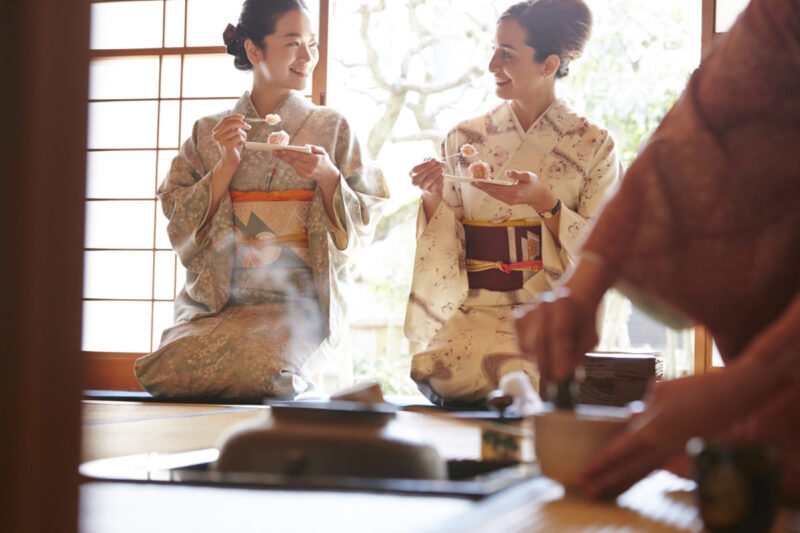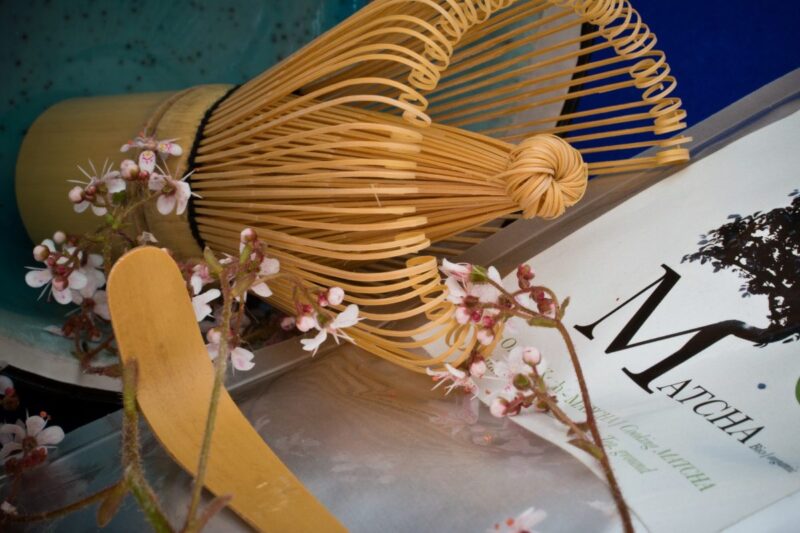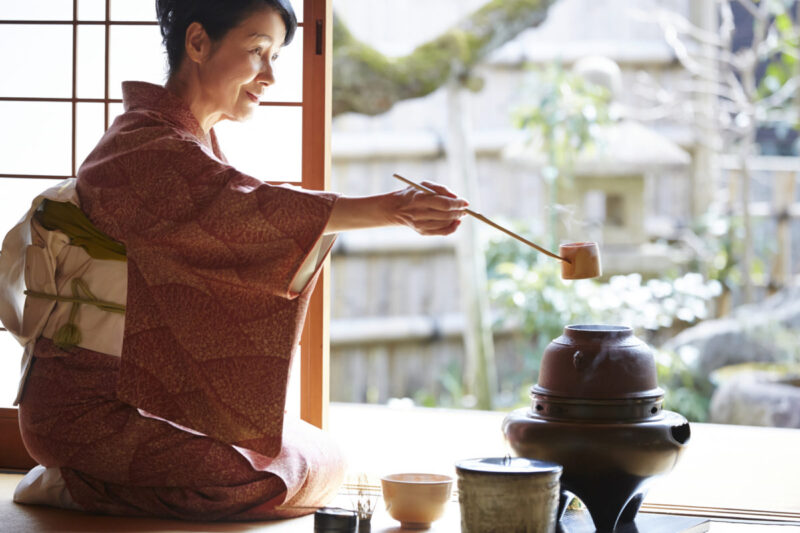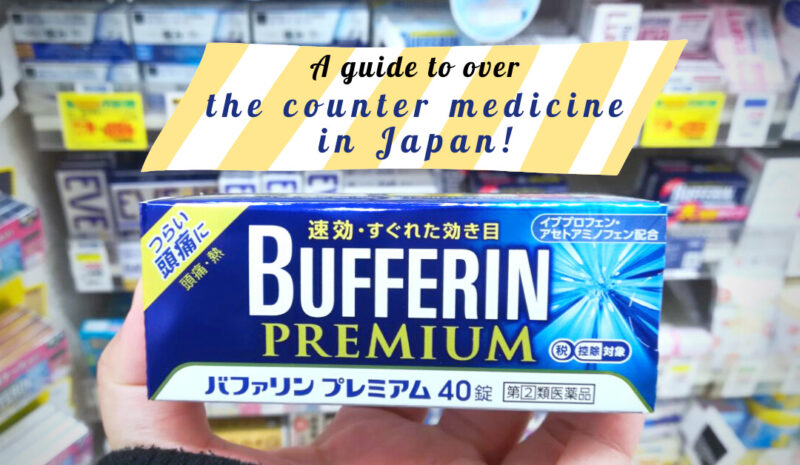A guide to the Japanese tea ceremony
Apr 15, 2020

Japanese tea ceremony, often referred to as cha no yu (茶の湯) is one of the most important Japanese traditions.
Also called as Sado (茶道), which literally means “The Way of Tea”, every move in Japanese tea ceremony is coordinated and has a meaning.
Today we introduce the details of Japanese tea ceremony, so let’s find out what you can learn from this beautiful art!
History of Sado

The tradition of tea ceremony dates back to the 9th century, when The Nihon Koki, one of the most important texts of Japanese history, mentions the story of a Buddhist monk Eichu who, serving sencha (unground green tea) to the emperor after returning from China. The serving style of the tea later became known as Sado over the span of roughly 700 years.
Originating from China, Sado has evolved and developed its own style, specifics, and rites. Zen Buddhism strongly influenced Sado during the 16th Century, and later it is also known as the spirit of Sado. The principles and teachings of Zen Buddhism later were integrated in the way of serving tea, consolidating the practice as it is known today. In the olden days sencha was mainly used, but these days most tea ceremonies use matcha (green tea powder).
What is Sado about?

Sado is the ritual of preparing and serving green tea, and usually takes place in a tatami room with a hanging scroll or flower arrangement. Up to five guests can participate in the tea ceremony, and usually a full-length tea ceremony lasts about 4 hours and includes a meal and two servings of tea.
Rooted in Zen Buddhism philosophy, Sado is a spiritual process, in which the participants remove themselves from the mundane world, seeking harmony and inner peace. It takes decades for someone to master the art of serving tea.
All movements and gestures in Sado are choreographed to show respect and friendship to the guests. The cups are hand-picked to match the character of individual guests, and the utensils are laid out at the best angle. Each tea ceremony shall become a unique experience, so the combination of objects is never used twice in Sado.
Dos and don’ts in tea ceremony

There are basic rules you need to follow when participating in a tea ceremony.
- Wear a kimono
- Arrive a little early (10 minutes before the ceremony starts)
- Take off your shoes at the entrance. Wear the slippers and wait until you get invited in.
- Don’t step in the middle of tatami if you can, and use closed fists when touching the mats
- Appreciate the host by complimenting their efforts, admiring the room and the delicious tea and sweets
- Don’t make small talk; all conversations are expected to focus on the ceremony itself
- For hygiene reasons, don’t forget to make a quarter turn of the bowl before you drink and wipe the lip of the bowl afterwards before passing to the other guests
You can have a tea ceremony at teahouses, temples, ryokan hotels, sweet shops, and at events and workshops.






